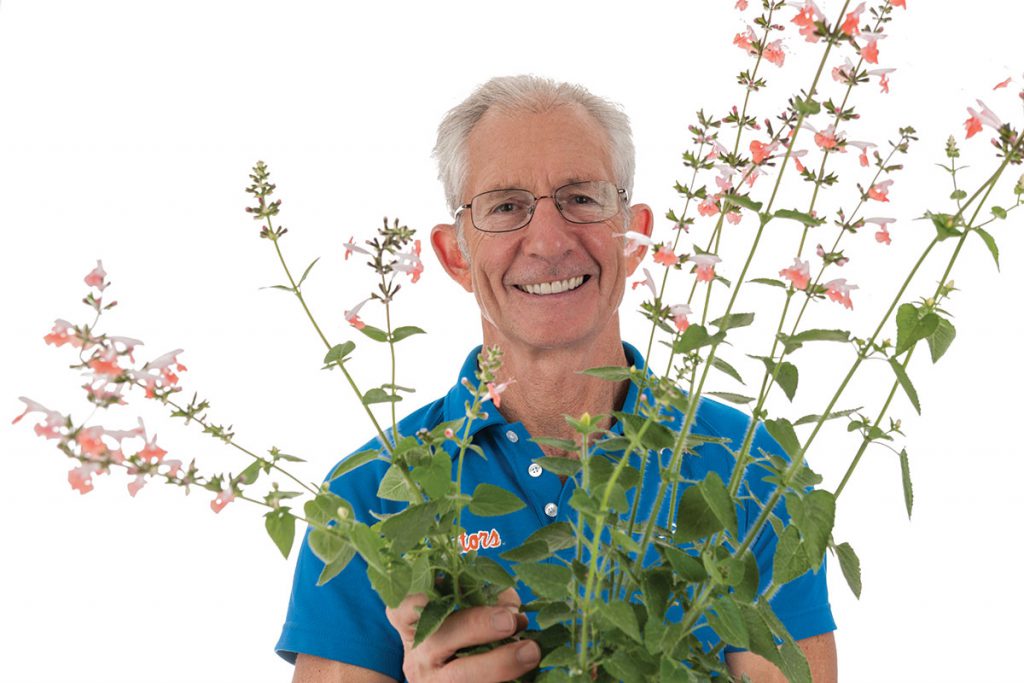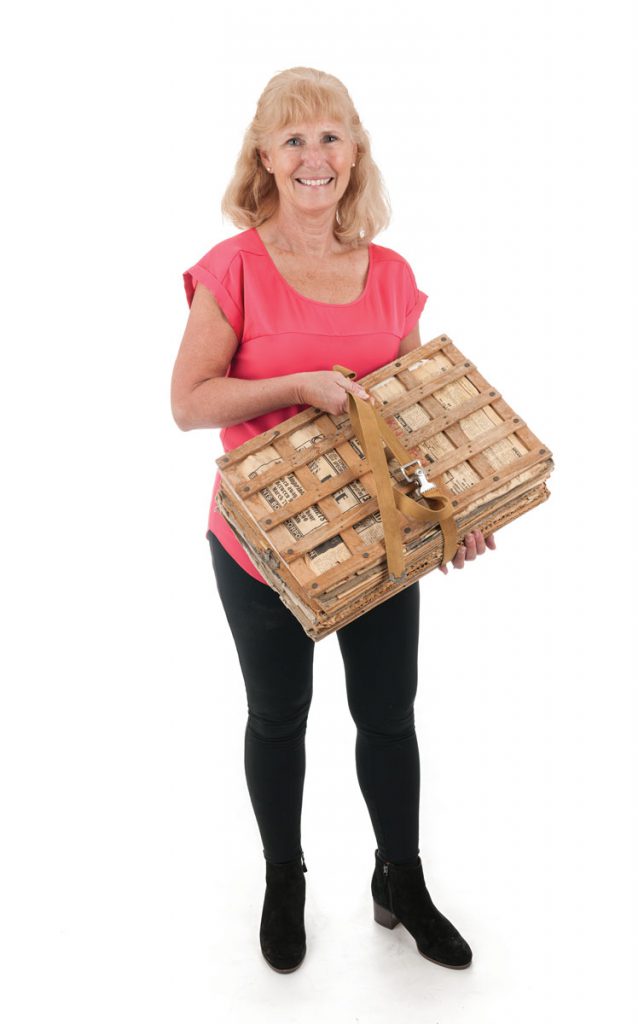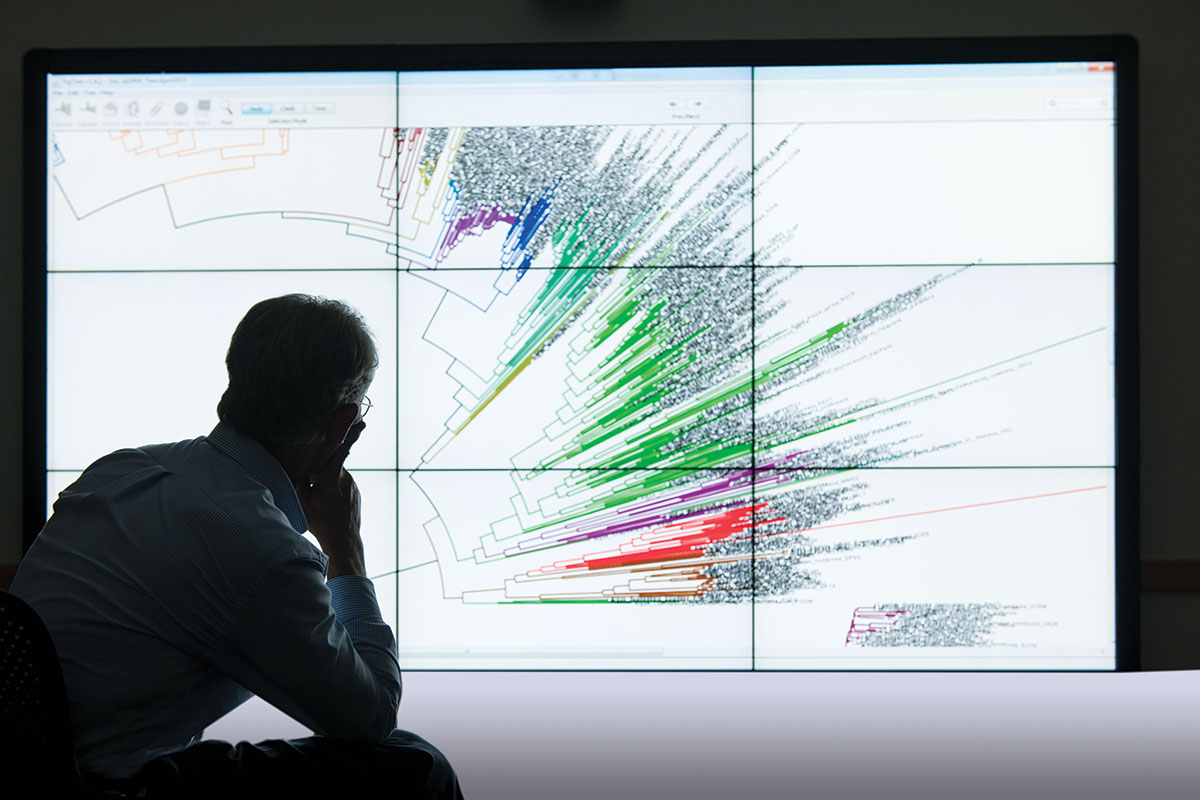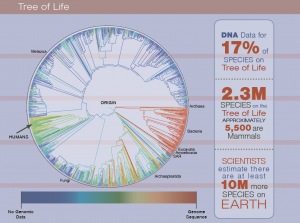In the human history of the Earth, a mere breath for the 4.5 billion-year-old planet, the next 50 years may be the most important.
“This is a critical moment we’re living in,” says Doug Soltis, a distinguished professor in the Florida Museum of Natural History. “In terms of our ability to use data and make analyses, we have the power to do amazing things at this point in our history to inform people what the future could look like.”
Earth has survived meteors, ice ages and soaring heat, and five mass extinctions. It will survive the era of human influence, the Anthropocene, too. Human survival, however, depends on embracing the opportunity — and the challenge — at hand: to protect the biodiversity that makes life on Earth possible. Biodiversity is about relationships among all plants and animals, including humans, says Pam Soltis, a distinguished professor recently named director of the University of Florida’s Biodiversity Institute, an initiative that grew out of the museum.
“People have to realize biodiversity does matter to them, to their survival, and to their children and grandchildren,” she says.
“We have one planet.”

UF has 128 scientists and counting who work on biodiversity issues, and has married its huge advances in computing power to that work, making the Biodiversity Institute a collaborative nexus of biodiversity science unlike any other in the world, Pam says.
The investment could not come at a better time, the Soltises say.
They have watched their own field, plant genetics, advance by leaps and bounds, and they think it is time for biodiversity science to draw on genetics and other disciplines in a new grand challenge: learning about biodiversity on Earth, and what it could mean to human survival, before that biodiversity disappears.
In the midst of what many view as the sixth great extinction, scientists think we are losing species at 1,000 times what is normal. The scary part, Doug says, is we often do not know what we are losing. Nature is the best chemist, and plants we have not discovered yet could yield a cure for a disease. Some losses we recognize, an ecosystem, for example, but without realizing we rely on it to scrub pollution from the air we breathe, or filter the water we drink. Some losses may sneak up on us. Our great grandchildren may only know charismatic big mammals — elephants, rhinos, gorillas — as stuffed animals.
On a rapidly changing planet, the Soltises say, we need to view biodiversity as a lifeline, and grab it.
Relationships Matter
The connection of one form of life to another is clear to biologists like Doug. But to make it clear to the rest of us, he and dozens of collaborators embarked on a gargantuan task in 2012, to build a Tree of Life, showing all known species.
Doug had been told it could not be done, but the idea had been nagging him for three decades, so he jumped at the chance to work on the project, funded by the National Science Foundation. In 2015, the international group published the Tree of Life and put it online for anyone to view or use.
The Tree of Life is depicted as a circle with the origin of life in the middle. From there, lines radiate along the circle’s rim, showing clearly, Doug says, that relationships matter. Of 2.3 million species on the tree, only about 5,500 are mammals. Among the mammals, humans are a speck, a single species reliant on all the others for a functioning planet.
“We are over here,” Doug says, using an arrow to show a spot otherwise invisible. “This is a very humbling way to think of ourselves; we are no more important than any of the other tips on this tree. We are simply one of these tips, one small branch on the Tree of Life.”
Although the tree is an enormous accomplishment, it’s only a rough draft, meant to be revised as discoveries are made. There is only DNA data, for example, for about 17 percent of the species on the tree, leading an international group of scientists, including Pam, to propose a gigantic sequencing initiative in February. And the species on the tree are just a fraction of life on Earth. Scientists think there are at least 10 million more species out there, a biodiversity challenge of epic proportions. They are chipping away, discovering about 14,000 new species each year, but at that rate it will take 900 years to describe and name what we think still exists, and Doug says 900 years is way too long for a planet experiencing rapid change.
“It’s staggering how little we know about the family tree for our own planet,” Doug says. “We should know more.”
Doug points out that the cancer drug, Taxol, is based on a compound first found in the Pacific yew.
The Pacific yew, however, is not common, so a better source was needed. By looking at the relatives of the Pacific yew, a more common variety was located, and that tree was used as the source of Taxol until the compound could be made synthetically.
Taxol is just one example of the promise of plant chemistry, and has prompted pharmacologists, including a group at the University of Vienna, to use the Tree of Life as a tool to identify plants potentially useful in drug development.
“Nature has already invented a lot of the things we are trying to invent,” Doug says. “We can use the Tree of Life to target areas where we are most likely to find active chemistry, and then look at the relationships between those plants.”
Scientists cannot use these plants in the future — for medicines, cures, crop improvement, soil improvement, clean water, clean air or ecosystem management — if they become extinct.
“If we don’t protect our biodiversity, we could lose thousands of unknown species and very likely lose organisms that could provide a cure that could have helped our children or grandchildren,”
Doug says.
Finishing the tree would take a major investment in biodiversity and more public awareness of the need for biodiversity.
“We just don’t have enough people. We need more scientists and more of the public engaged with working with scientists, more citizen scientists, so we can get everything collected, described and entered,” Doug says. “It’s going to take a village.”
Fast and Furious
In 2000, the first plant genome, a simple weed, was sequenced. The Soltises were among the scientists hard at work on Amborella, the duck-billed platypus of flowering plant species, the point from which all flowering plants evolved millions of years ago. Doug says when he heard about the breakthrough, he turned to Pam and said, “I hope before we retire, we’re able to sequence the Amborella genome.”
Recently, they checked that goal off the list, thanks to rapid advances.
“We published that in 2013,” says Pam, who recalls a time when it was possible to know each base pair in a sequence intimately because the sequencing process was so slow. Today there is a flood of data, fast and furious.
The revolution in DNA was followed closely by technological advances and increases in computational power, creating a wave of new science. Today, the Soltises’ Laboratory of Molecular Systematics and Evolutionary Genetics is busier than ever.
The museum’s Genetic Resources Repository archives more than 60,000 tissue samples and DNA and RNA preparations from specimens in all the biological collections in the museum. The biological material is stored at negative 196 degrees Celsius for use in long-term molecular analyses. The repository is one of the largest of its kind in the country.
Mastering the computational challenge of the Tree of Life also unleashed a wave of new approaches in biodiversity sciences as biologists saw the power in the new tools, Pam says. At UF, she says, new investments in bioinformatics and in the HiPerGator supercomputer, with 51,000 computing cores and three petabytes of storage, are beginning to pay off.

Combining the genetic data, ecological data, and museum specimen data, and then applying technology like remote sensing and computational power allows scientists to integrate data to produce new models, new ways of looking at a problem and perhaps solving it. Species level data are still important, but as Doug points out, scientists who focus on a species realize it has a relationship to other species and to an ecosystem. What happens if you pull just one species, one thread, out of the fabric of life? Its absence will have a ripple effect, and that effect is something scientists are beginning to study in new and exciting ways.
Even traditional activities, such as collecting trips, have changed, colored by the urgency with which scientists view the future.
“Early on,” Pam says, “we collected leaf samples for DNA, then a herbarium voucher,” which documents where a plant was collected and when. “Today, we think very differently about collecting; it’s much more holistic.”
On one current project to study Florida trees, the team is collecting the usual vouchers, but also enough leaves to do analyses of DNA, plant chemistry and metabolomics. Other samples are collected to study microscopic creatures in the leaves, such as bacteria. Soil samples are collected from beneath the trees to study soil microbes. Ecologists are part of the group as well.
“As a community, we’re recognizing that these samples can be used for all sorts of unpredicted purposes. Just like we’re now using herbarium specimens that have been in our collection for over 100 years as sources of DNA,” Pam says. “Now, we’re thinking, what would somebody in the future possibly want from this collection? As our natural systems become increasingly degraded, the more information we can collect now and house for future experiments, the better.
“This forest, for example, may not be here in 20 years, or if it is, it may not be accessible,” Pam says. “So we need to get the samples while we can.”
Doug points out that the scientists who collected the 100-year-old plants he has used for DNA analysis, could not have predicted the DNA revolution. Even 20 years ago, DNA analysis on aging specimens was difficult, the material too degraded. But technology has advanced, and today, he says, he can use mere snippets of DNA for sequencing.
“Some specimens that weren’t so useful with older technology, can now be used,” Doug says. “I think our record for DNA is a 125-year-old plant.”
The data create models, and the more data, the better the models.
Already, the Soltis lab, working with Associate Curator of Informatics Robert Guralnick, is modeling the distributions of plant species in Florida. The models use location information and environmental data, such as temperature, soil type and precipitation. So far, 1,500 of Florida’s 4,200 plant species are modeled, and already some trends are becoming clear. In a changing climate, plants won’t stay put. Some tree varieties, maples and oaks, are moving northward, as are mangroves. Iconic landscapes like salt marshes are on the verge of drastic change.
The model, however, needs more input: what are fungi doing, birds, amphibians, mammals?
“People think everything is going to react the same way, that the birds that interact with the plants, the butterflies that depend on the plants, will just do similar things in response to a changing climate. But they won’t, and that’s the challenge,” Doug says. “If organisms go in different directions, a plant could lose a pollinator, a bird could lose a prey item it depends on. That’s already happening in some places. This interplay among all these organisms is so crucial.”
Florida is ground zero for the impact of change on biodiversity — few states have more biodiversity — and that makes UF’s 100-year investment in the museum a solid foundation for the new focus on biodiversity sciences, Pam says. In the Biodiversity Institute, she sees computer scientists working alongside biologists — and alongside students and citizen scientists — to create new knowledge.
It’s a great opportunity, she says, to do something lasting. Evolution and extinction are part of life, a balancing act. But when extinction speeds up, it demands attention, and she hopes the Biodiversity Institute can focus attention on the future of the Earth, and humans.
“This window we’re in now, the next 40 or 50 years, may be the most crucial window in human history,” Doug says.
As the Biodiversity Institute refines its models, Pam says, the goal is to help citizens make decisions. Just as the evolutionary branches on the Tree of Life diverge at certain points in history, human decisions do, too.
“We can model scenarios over the next 50 years,” Pam says, “and then ask: Do you like what you see?”
Photo Credits: Kristen Grace
Sources:
- Pam Soltis, Director, Biodiversity Institute; Distinguished Professor and Curator, Florida Museum of Natural History
- Doug Soltis, Distinguished Professor, Florida Museum of Natural History and Department of Biology
Related Website:
Related Video:
This article was originally featured in the Spring 2017 issue of Explore Magazine.


